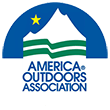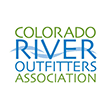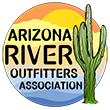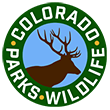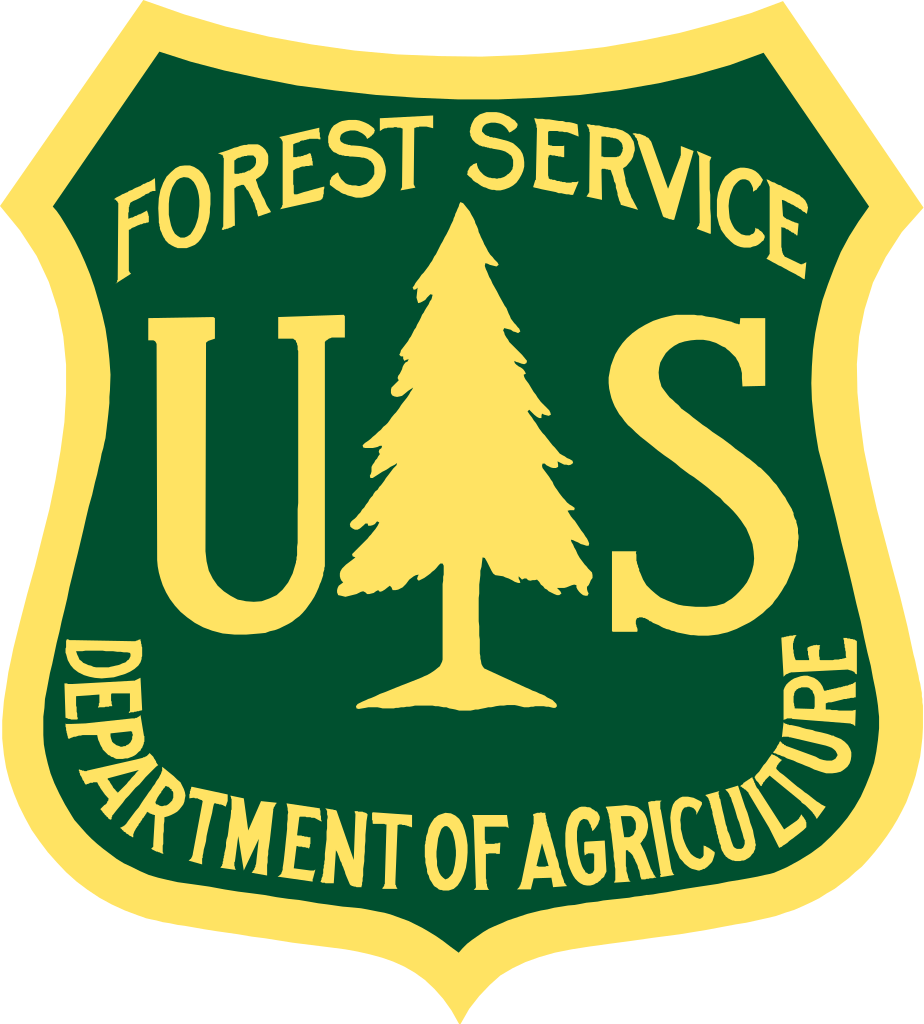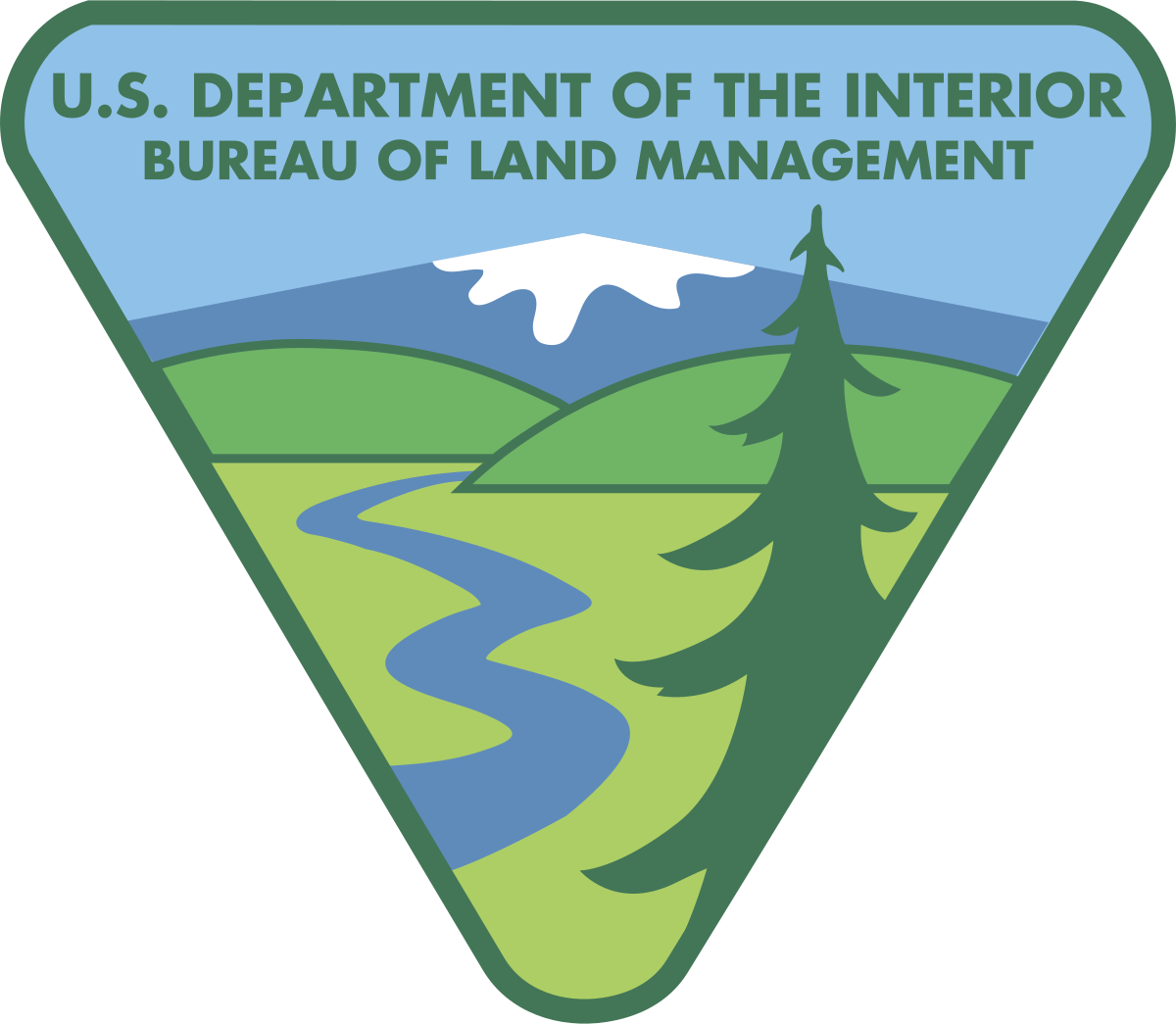Family Friendly Adventure Expeditions
If you have children and you were to tell them that this year, you were all going to go on an Colorado adventure. They would probably laugh, snicker, and scoff at the idea. Assuming perhaps that it meant the usual trek through the hills, or a bike ride through some trails. But would you blame them if that were actually the case? Has our meaning of adventure lost its allure? Or have we simply overused the word to cover anything that is outside the norm of everyday life? Adventure once meant a daring and unusual experience that required enthusiasm from those participating. It took a bit of enterprise and planning, it also took some courage. Not that danger had to be inherent, but the possibility of danger does add to the excitement. Now for a family trip, you would want to lessen any possibilities of danger. But precautions can be made for any form of expedition, even to the extent that you can almost alleviate any potential for trouble to arise. Countless families go rock climbing, camping, trail riding, even hunting together. All of these have some form of danger involved in their activity. However, none of those could be considered an adventure if they have done them before, especially if it is in the same area that you have always been to. Remember that adventure must contain a few key components if it is to be adventurous. It first must be a daring and unusual experience. The daring aspect of it may be easy to cover as many activities are daring, but for it to be unusual means that you must not be familiar with it. This is hard as it leads to the second point which is that it must take a bit of planning and enterprise. This is where enthusiasm rises from, the idea of doing something you have not done before and preparing yourself to do that. This then leads into the last point which is that it must take courage. Courage doesn’t have to mean you must risk life and limb. But simply that you have the courage to try something you have yet to experience, to plan it out, and set your mind to completing it. You can’t go on an adventure if where you are going you have already ventured. Thats why its an addition to venturing… an adventure. So when a child doesn’t feel the weekend trail ride in the mountains is as fun as it once was. It’s probably less the fact that they’re getting older and more that there is no thrill in it any more. There is no other time in life where people are more adventurous, and can possibly be so, than when they are children. They epitomize the spirit of adventure, which undoubtedly is still in all of us. We just lose touch with it as we age and fall into the routine of everyday life. But I would assume that we all miss that care free adventurous spirit we once possessed, and would not want our children to lose theirs as well. To help avoid this, ensure that your next trip is an adventure in the purest form. Perhaps take a family friendly rafting trip to a river you have not been to, or go spelunking and explore a cave that you had not known of. If you want to keep the spirit of adventure alive in your children, you must help it to grow as anything else. Also, if you care to reawaken your own spirit, all you have to do is try. If you would care to go on a Colorado rafting vacation, or raft the Colorado River, visit www.inaraft.com to see what options are available. Rafting the Colorado river has never been made more simple.
Historic Expeditions on the Colorado River
The Colorado River, Colorado’s largest river, has a history as long and dramatic as the course of the river itself. Which weaves its way through the southwestern portion of the United States and down into the northwestern side of Mexico. The river begins in the central area of the Rocky Mountains, and flows nearly 1500 miles, through 7 U.S and 2 mexican states. Once in Mexico, the river turns into a large delta which then empties into the Gulf of California. The Colorado River (Color Red) was originally named for the reddish tint of color found in the water, however, the numerous damms the have been erected over the years has caused the water to turn more into a clear greenish color. In the early 1500’s, Spanish explorers began to colonize the western portions of North America. One reason for this was to search for the fabled Seven Cities of Gold. It was believed that Native Americans had erected these cities somewhere in the southwestern desert. Francisco de Ulloa was the first explorer to reach the Colorado River in 1536, but it wasn’t until Francisco Vasquez de Coronado began his expedition to search for the Cities of Gold from 1540-1542, that the river was truly mapped and coursed. In order to raft the Colorado River, which was an extremely dangerous endeavor, supplies had to be gathered, boats had to be crafted, and men readied for the strenuous trip ahead. The bravery necessary to raft a known river is in itself impressive, but to raft an unknown river, with unknown dangers looming ahead, takes a certain kind of tenacity that is not often known today. It wasn’t until the mid 1800’s that large sections of the river had been unexplored. Though, a name that may be rather familiar to those who live in Colorado, is that of the one armed civil war veteran John Wesley Powell. Powell led an expedition from Wyoming down to Arizona, to what is now known as the Hoover Dam. Before Powell, large lengths of the river remained unexplored as the course was both remote and terribly dangerous. So not much was known about the Colorado River, nor its surroundings, or inhabitants. Though, Powell was determined to set off, and with nine other men, none of whom had any experience with white water rafting, they began their journey in May of 1869. After four months of coursing their way through a dangerous and rugged landscape, they finally arrived at the mouth of the Little Colorado River. This is where Powell wrote some of his most famous words about what he coined the Grand Canyon of the Colorado: “We are now ready to start on our way down the Great Unknown. Our boats, tied to a common stake, are chafing each other, as they are tossed by the fretful river. They ride high and buoyant, for their loads are lighter than we could desire. We have but a month’s rations remaining. The flour has been resifted through the mosquito net sieve; the spoiled bacon has been dried, and the worst of it boiled; the few pounds of dried apples have been spread in the sun, and reshrunken to their normal bulk; the sugar has all melted, and gone on its way down the river; but we have a large sack of coffee. The lighting of the boats has this advantage: they will ride the waves better, and we shall have little to carry when we make a portage. We are three quarters of a mile in the depths of the earth, and the great river shrinks into insignificance, as it dashes its angry waves against the walls and cliffs, that rise to the world above; they are but puny ripples, and we but pigmies, running up and down the sands, or lost among the boulders. We have an unknown distance yet to run; an unknown river yet to explore. What falls there are, we know not; what rocks beset the channel, we know not; what walls rise over the river, we know not; Ah, well! we may conjecture many things. The men talk as cheerfully as ever; jests are bandied about freely this morning; but to me the cheer is somber and the jests are ghastly.” —John Wesley Powell’s journal, August 1869 That same month, three of Powells men deserted, believing that they could not survive the remainder of the trip. Though, they were either killed by Native Americans or Mormon settlers after making it to the edge of the Grand Canyon. The remainder of the crew continued on and only two days later reached their goal which was St. Thomas. In 1871, Powell began a second expedition though this time he had the financial backing from the U.S government. Through the course of Powells second expedition, him and his men named various features and areas along the way. Names which still remain till this day. There is the Glen Canyon, the Dirty Devil River, Flaming Gorge and the Gates of Lodore. Oddly, the most well known is Lake Powell. Which is only odd because he was so well known for river rafting, not sailing lakes. It was once wondered, “where is the Colorado Rivers origins and what does it eventually lead to?” Well those questions have been answered numerous times by many people traveling the various branches off this great river. But if you would perhaps care to travel a section of it yourself, it would behoove you to check out our multi-day trips. You can experience for yourself what Powell and his men had both seen and feared seeing in the past.
Lets all Pay a little Due Respect to Colorado Rivers
Colorado was named after the Colorado River, which early Spanish explorers named the Rio Colorado for the silt found in the river carried down from the runoff from the surrounding mountains. If you have never seen the Southwest of Colorado, you might not realize that the mountains are a striking red color which are vastly different from the Flatirons found near Boulder. When you think of Colorado, images of high planes and huge granite peaks may come to mind. But for many, a lack of thought goes into the various rivers and waterways, which throughout time, have shaped this beautiful state as they snake their way toward the Southwest. Rafting Colorado rivers is nothing new, rather, it has been done many times before and for various reasons. Explorers and natives used these water ways to transport goods, and to navigate through lands which were too difficult to navigate on foot. They’ve been used for a source of food as well as energy. Colorado Rivers have in the past, and continue to this day to allow this state, as well as others, to function. When we think of all the things to be appreciated in this state, sadly it is one of the last thoughts on our minds. Usually we conjure up images of high peaks, low valleys and the abundance of wildlife and plants. Perhaps however, it is time our rivers receive a little limelight for allowing all these other things to be. One simple way to achieve this is by simply taking part in the activities these rivers provide us. From swimming to fishing, to whitewater rafting, there are numerous activities that can be taken advantage of. Especially because there are a number of rivers from which to choose from. There are over 200 waterways in Colorado, to name only a few there are the Arkansas River, White River, Yampa River, Swan River, San Juan River, and the famous Rio Grande. Each river has it’s own unique history and story, with tales of gold mining, rafting, and general exploration. One great aspect of these rivers are the breathtaking scenery created by the years of carving these rivers have accomplished in the rock. There is the Royal Gorge, which has the Royal Gorge Bridge suspended above it. There are the sheer cliffs that the White River have carved out in the White River National Forest. Due to the endless effort of the water, there are also countless caves spread throughout the state which are accessible. Many of which are next or near to these rivers. Next time, any thought of what activities can be done in Colorado are given, consider paying a little due respect to our many rivers. They have created a vast playground in which we have the opportunity to enjoy, and we shouldn’t necessarily look up to the mountains for things to do. We just have to let our eye follow where the rivers flow, and there are bound to be places to play and go. If you want some advice on where you can enjoy the various rivers in Colorado, or care to plan out an exciting trip, please visit Wilderness Aware Rafting. They will have many options available from which to choose, but all take advantage of what this state has to offer.
Backcountry camping without the hassles of backcountry camping.
There is a certain call to the wild that people often have the urge to listen to. In our otherwise civilized world, it is a rather primitive instinct to listen to. One which we try to follow by doing one of countless activities. Such as rock climbing, camping, hunting, white water rafting, hiking, and mountaineering. The reasons for these urges are many. Perhaps it is simply within our nature to disdain or abhor being confined by walls on all sides. Or perhaps it is the easiest way to forget and receive relief from the stresses of everyday activity. Whatever the reason, there is a definite want, and at times even need for being in nature. Though, try as we may, there is always the want for more. The reason for this is more easily defined, we simply do not spend enough time away from that which run. Some people are fortunate enough to have the free time to spend as much time as they care in the wild. The problem is that most ordinary people do not have that privilege. On top of that, the planning and preparing for such trips can be a headache large enough for some to give up on any grand ideas of adventure. But fear not, there is a simple and brilliant solution to this problem. Why not allow others to do the preparing and planning needed for such endeavors? Wilderness Aware Rafting offers multi-day rafting trips which allow you the freedom and peace of mind needed to properly enjoy your “call to the wild.” These Colorado Rafting and Arizona Rafting trips offer everything one could hope for in an adventure in the backcountry. But they accomplish this without any of the hassles normally associated with backcountry camping. Everything is taken care of, the camping locations are known, the food prepared, and the routes down the river scouted. The only thing needed is the desire to answer that call. There are multiple trips that can be chosen, and Wilderness Aware Rafting offers everything from overnight stays to 10-day epic trips. Most of these trips are safe for anyone over the age of 8-10, and as a child, would leave a lasting and memorable life experience. As an adult, it allows for a stress free and truly authentic adventure with full exposure to the wild and elements. Upon a Colorado White Water Rafting or Arizona White Water Rafting trip, you might believe all you will be doing is rafting. Granted the rafting trip itself will be both fun and exhilarating, it is only a means to the end, not the end in itself. You do not spend entire days on the river, rather, the trips have been designed to allow people to enjoy other activities. Such as fishing, camping, hiking, and just general exploration. There are many things to see both on and off the river, and these trips are planned around that knowledge. If a multi-day Rafting Colorado trip sounds like something that you and your friends, or family can enjoy. Please visit Wilderness Aware Rafting and take a look at all the different white water rafting trips planned to see if any fit and may fulfill your call to the wild.
Experience the allure, wonder and natural beauties of Colorado by rafting down the states most prominent rivers!
Summer has finally entered full swing in Colorado, and we at Wilderness Aware Rafting want to help share what we find to be the most beautiful and awe inspiring parts of this great state. Rafting in Colorado is one of the easiest ways to experience much of the flora and fauna that this state has to offer. Two of the better rivers that can be experienced in Colorado are the Arkansas River and the Royal Gorge River. Both are located in the south and southwest of Colorado. Rafting in Colorado provides unique encounters with its wildlife and allows to fully appreciate the states plant diversity. This is due to the fact that plants obviously thrive and are healthier when there is a constant water source available. Wildlife also flourishes when water is readily available. Upon an Arkansas River Rafting and Royal Gorge River trip you could expect to see the infamous Soapweed Yucca plant which is oddly well suited for sewing purposes. If you were to draw the needle out from the middle of one of its leaves, the needle will have long strands that are attached to it which make it quit suitable for sewing rips and tears in your clothing. There is Sagewort or Sagebrush which is commonly used to feed cattle as it contains very high levels of protein. Blue Grama Grass is important for holding together prairie soil due to its shallow dense root system. This helps to prevent the soil from blowing around as it did during the dustbowls of the 1930s. There is the Plain Prickly Pear Cactus which is known for making many a hikers day a bit uncomfortable. Also any number of wild flowers can be seen, such as Asters, Blazing Stars, Purple Clover, Coneflower, Fleabane, Wild Indigos and many more. Some of the wildlife that can be seen while rafting in Colorado are Coyotes, Badgers, Foxes, and even Black Footed Ferrets. Deer, Prairie Dogs, and Pronghorn. For anglers, there are Brown and Rainbow trout. For the bird enthusiast, there are Humming Birds, Herons, various types of Hawks, Falcons, Owls, Kestrels, Meadowlarks, Kingbirds, Vultures, and if you’re lucky you may even spot one of the few endangered condors which still grace our skies. Which there are only a few hundred left in the wild. The sheer number and diversity of wildlife in the area makes any trip upon these rivers memorable. If you have an appreciaiton for either flora or fauna, it is almost certain you will not be let down in your experience upon these rivers. Even Rock Hounds would feel traveling in these areas as an adventure. Aquamarine is often sought after in the region as well as various Geodes which can be found. If you are looking for something fun, thrilling, educational, and perhaps even meaningful to do with friends and family, then taking a River Rafting Trip through Wilderness Aware Rafting would be something that should be considered. It’s almost assured you wont be let down.
Plan Your Perfect Colorado Whitewater Rafting Trip!
Are you looking into planning a Colorado whitewater rafting getaway, but don’t know where to start? Between finding the right rafting company, the right deal, and the right trip location, pulling a rafting vacation together can be overwhelming. Here’s a quick breakdown of our different rafting locations and trip specials to help you find everything you need in one place. Once you’ve got a feel for what we have to offer, you can find more Colorado white water rafting trip information here or book a rafting trip. The more, the merrier… Planning a large trip? If you have a group of 21 people or more, and you want to stay together as a group on the river, your best options will be trips on the Arkansas or Upper Colorado rivers. White water rafting Colorado with a large group can double your fun and adventure when you’re on the right river with the best guides—and Wilderness Aware can give you both. …But size isn’t everything. For groups smaller than 21 people, a more intimate wilderness setting is a great choice. The North Platte River in northern Colorado or the Dolores River in southern Colorado may be just what you’re looking for. With frequent wildlife sightings, unmatched scenery, and a slower pace, these rivers can offer you a retreat you’ll talk about for years to come. If you’re going even smaller with 10 people or less, start by taking a look at our trips on the Gunnison River. With a setting that’s stunning as well as intimate, this trip gives visitors the most remote and exclusive rafting experience Colorado has to offer. A smaller group allows you to have a trip that can be a bonding experience as well as a great adventure. Weekend warrior? If you’re looking for rafting near Denver, you’ll want to consider our trips on the Arkansas River. Made the most popular river in Colorado by its continuous rapids and ready access to Colorado’s front range cities such as Denver and Colorado Springs, these trips provide a shot of adventure and still allow you to get home and unwind. The best choice for white water rafting near Denver and Colorado Springs! Whether you’re looking for Colorado horseback riding or Royal Gorge rafting, we’re here to make it happen. Don’t forget to check out our information on planning trips for youth groups, Boy and Girl Scout troops, or other special groups. The above rivers can serve as a great starting place for planning your trip, but for more information on rafting Colorado or planning a Colorado rafting vacation, give us a call at 719.395.2112 or visit us at www.www.inaraft.com.
What Do Colorado Whitewater Rafting and Snow Sports Have in Common?
With winter in full swing, snow sport enthusiasts are flocking to Colorado to ski, board, and snowshoe to their heart’s content. For those of you who bleed powder, we wanted to say two things: first, you should get that checked out, and second, snow sports and Colorado white water rafting trips may be more similar than you think. Adrenaline fix: As anyone who’s tried Royal Gorge rafting can tell you, skiing isn’t the only way to get your blood pounding. (Check out our Royal Gorge rafting trips and try it for yourself if you don’t believe us.) There’s nothing quite like navigating down a lightning-quick series of rapids with just your strength and wits—and your experienced instructor, of course—to guide you. If pushing yourself physically and mentally is your thing, get out there and ski to your heart’s content. And this summer, when you’re starting to go into low-level adrenaline withdrawal, book one of our Colorado raft trips. We’ll make sure you have the adventure of a lifetime. Beautiful scenery: We’ve all heard about the skiing at Breckenridge, but you might be surprised to know the rafting near Breckenridge is in a class all its own as well. Check out this stunning area of Colorado when it’s not covered in snow, and you might be surprised by the view. Wind through stunning canyons and vistas, spot wildlife in the Rockies, feel the sun on your face, and enjoy this iconic Colorado location when you can feel all of your extremities. There’s just no doubt about it—Breckenridge rafting is a hard act to follow. Strength training: Rafting and skiing are indisputably two of the hardest workouts available in outdoor sports. Both involve turning, twisting, flailing, and general intense physical activity until you’re either out of the water or at the base of the mountain. If you’re worried about your sculpted snowboarding abs disappearing with the snow, remember that rafting has no match for working your core muscles. Not to mention it has the added benefit of going easy on your knees. Superior instruction: Remember that ten-minute intro you had when you started skiing? Sure, it was great at the time—but when push came to shove and it was time to hit the bunny slopes, it was all you. With our Colorado river rafting trips, you get the benefit of an experienced guide who stays with you through the good, the bad, and the flat-out scary. Our guides lead your trips, serve as medics, cook your meals using only fresh ingredients…you get the picture. Outdoor sports are good. Outdoor sports when someone else is making you dinner are great. We hope you now have a different perspective on how boarding Colorado and river rafting Colorado aren’t so different after all—except for warmer weather and better tan lines. For more information on whitewater rafting near Buena Vista, or to book one of our Colorado raft trips, go to www.www.inaraft.com. Have fun on the slopes this winter, and we’ll see you on the river.
Stay out of the water this winter with our Colorado land-based adventures.
Yes, we’re a rafting company, and yes, we love the river. But since the weather’s still too chilly for planning Colorado white water rafting trips—and if you’re looking to explore the Rockies on more solid ground—don’t miss the other adventures Wilderness Aware Rafting has to offer. Our guide-led jeep tours, horseback trail rides and mountain bike tours guarantee that we have what you’re looking for. Horseback Trail Rides If you want to hit the trail but you’re over hiking, we have the solution. Saddle up on one of our Colorado horseback rides and let us help you discover why horseback riding is this state’s second most popular outdoor activity. The closest horseback rides are located near the Arkansas River, with our shorter rides following a cottonwood-lined creek with views of the valley’s majestic Mt. Princeton and our longer horseback rides climbing the edge of adjacent Mt. Antero. Additional horseback riding options include trips over beautiful forest service land northwest of Leadville and along the base of Pike’s Peak in Colorado Springs. Whether you want to thrill your child with a 30-minute pony ride, take the whole family along for an hour on a horse-drawn wagon ride, or spend a full day exploring Colorado on horseback, we can make it happen. Horseback rides require a minimum of two people to sign up, and most trips run year-round, making this a great option for cooler weather. Check out our Colorado horseback riding trips today, and we’ll see you on the trail. Mountain Bike Tours Want to get a little closer to the ground? Take one of our Colorado mountain bike tours and prepare for the ride of a lifetime. Fun for beginners as well as experienced mountain bikers, this trip comes in two options. The first is a downhill paved road from 12,000 feet on the Continental Divide, where you will experience spectacular views of the Arkansas River Valley’s numerous 14,000-foot tall peaks as you soar through pristine aspen groves and high mountain pine forests alongside one of our experienced mountain bike guides. The second option is exploring the historic Midland Railroad Grade, a quiet mountain dirt road and single track trail that winds past stunning views of the 14,000 ft. Collegiate Peaks. The dirt trail option brings the pace down a notch and lets you enjoy the surrounding beauty of the Colorado Rockies while incorporating some technical bike maneuvering. Whether you’re on your bike every weekend or this is your first time mountain biking in Colorado, we have a set of wheels for you. For more information on joining us for a Colorado mountain biking trip, go to www.inanraft.com. Jeep tours For a safari-style tour of the Colorado Rockies, nothing beats one of our Colorado jeep tours. On one of our half-day trips, you can discover groves of ancient bristlecone pines nestled at the top of Mt. Princeton or visit the unique ghost town of St. Elmo. Or, take a full day and ride up a rugged switch backed trail to the summit of Colorado’s Mt. Antero, one of the best areas in the United States for mineral and gem collecting. Whichever trip you choose, our jeep tours guarantee to give you an unforgettable adventure—and leave both your hands free for picture-taking. Book a Colorado jeep tour today! For more information on rafting Colorado, or to check out Buena Vista whitewater rafting trips, go to www.www.inaraft.com.
Support the Proposed Browns Canyon Wilderness
Browns Canyon “boasts some of Colorado’s most pristine forests, great hunting and fishing habitat, and draws outdoor enthusiasts from across Colorado and the country during nearly every season,” – Former Senator Ken Salazar. Just below Sugarloaf Mountain, and a few miles north of Salida, where the Arkansas River runs north-to-south through Browns Canyon, lies some of the most beautiful land in Colorado. The rugged nature of the country, with its low rocky hills, semi-desert climate, and proliferation of wildlife makes it unique. Granite canyon walls line the rushing Arkansas River. It also makes it ideal for outdoor recreational activities, including hiking, camping, hunting, and white water rafting. The lack of rainfall and arid climate also make it uniquely fragile and more susceptible to damage from human activities. Wilderness areas protect watersheds and forests, protect wildlife species and their habitats, and preserve the pristine solitude of the environment for those who appreciate the natural beauty of the wilderness, today and in future generations. In addition to protecting the fragile and beautiful eco-system of the Browns Canyon area, the proposed Wilderness would protect the numerous recreational opportunities the proposed Wilderness area affords. Browns Canyon is one of the most popular white water rafting destinations in the world. Browns Canyon of the Arkansas River is a beautiful boulder-strewn river where the whitewater is lively and constant, and there is something for every skill level, featuring exciting whitewater rapids like Pinball, Zoom-Flume, Big Drop, Seven Stairs and Widow-maker. The proposed Wilderness would protect the natural beauty of the area, and help preserve one of the best river-rafting destinations in Colorado. Unfortunately, although it has numerous supporters among Colorado outdoor enthusiasts and Colorado congressmen and women, past and present, progress toward making the area a protected Wilderness has stalled. Please write your congress-person and tell them to support the proposed Browns Canyon Wilderness, or visit https://brownscanyon.org/ for more information and how to help. View more information about Browns Canyon rafting or Arkansas River white water rafting trips.
The Risk of Flooding in Colorado Rivers is Declining, Creating Ideal Whitewater Rafting Conditions
According to the National Weather Service and the US Geologic Survey, high water levels in Colorado rivers are falling back toward normal levels, as flood waters have crested and more moderate temperatures have led to a more stable, normalized release of snow melt across the state. This stabilized melting should continue into July, as Colorado rivers and streams generally remain at above-average levels within a normal range. Late spring snowstorms resulting in an average snow pack of 247% of normal levels have generated concern over the possibility of flooding in many Colorado rivers, and had authorities bracing themselves across the state. These concerns now appear to have diminished, although flooding remains a risk in some areas. The rivers with the highest risk of flooding remain those in northwestern Colorado, including the Elk and the Yampa near Steamboat Springs, as well as the Cache la Poudre near Fort Collins. Those at the lowest risk include rivers in southern and central Colorado such as the Arkansas River and its tributaries, which can expect average to slightly above average water levels. Water levels on the Colorado River have dropped in recent days, lowering the risk of flooding. Readings at the Cameo station dropped from a high of nearly 30,000 cfs early last week to 25,500 cfs this morning (June 14th). Overall, cooler temperatures during the late spring and summer have curtailed expectations of higher flows created by a series of late-spring snowstorms in Colorado. Forecasters now expect a more mild, sustained snowmelt continuing through mid-summer, reducing the risk of flooding and creating great conditions for white water rafting in Colorado. Ideal White Water Rafting Conditions The combination of high spring snowfall amounts across the state, and cooler weather during the snow melt season resulting in a moderate snow melt rate forecasted to continue over an extended period of time have created the likelihood of a near perfect river-rafting season throughout Colorado. Rivers throughout Colorado, including the Arkansas River, Colorado River, Animas River, Gunnison River, North Platte River, and the Dolores River are open and are looking forward to sustained excellent river rafting conditions. And while a slight risk of further high water flows remains through June, when localized flows spike to high levels that are of concern to rafters, rafting companies are able to move trips to less turbulent sections of most Colorado rivers to match the level of skill and risk that their customers are able to enjoy. As of this morning, the US Geologic Survey was showing the water levels on the Upper Colorado River near Kremmling at 7,570 cfs, and 15,600 cfs at Dotsero, the Arkansas River just below Buena Vista at 3,170 cfs, the Gunnison River near Gunnison at 4,090 cfs, the North Platte River near Northgate at 4,270 cfs, and the Dolores River near Dolores at 1,560 cfs. View here for a complete list from the USGS.

